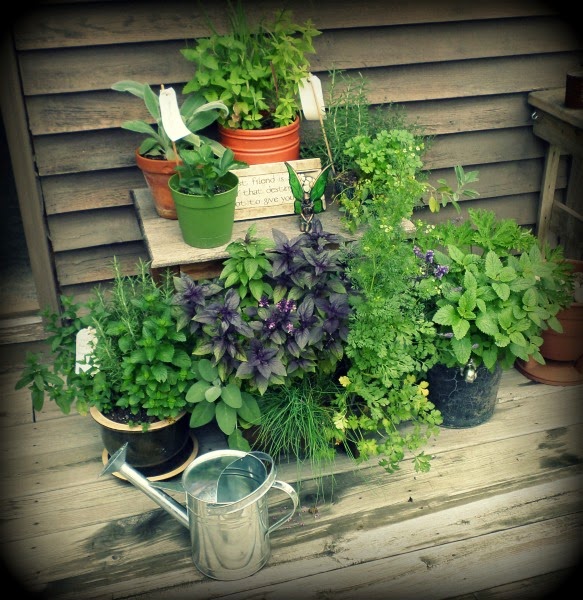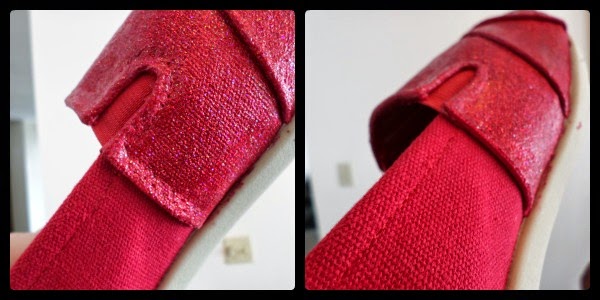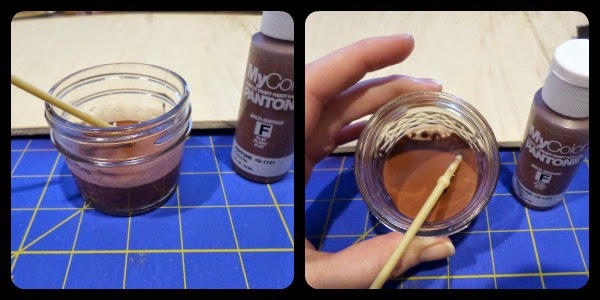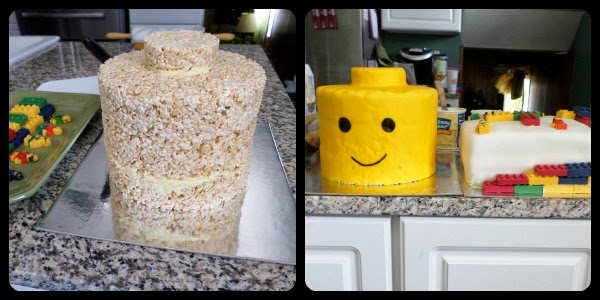These are just a handful of tips to prolong the life and use of your candles. While my experience is working with soy and bees waxes, these should be consider for candles of any wax type. If you're spending a lot on your favorite candles, why not get the most out of them?
1. Trim the wick
We've all been told this, make sure to trim candle wicks to 1/4" before burning, and this tends to be printed on candles' warning labels, but what's the point of taking scissors to your candle? It's flame control right off the bad. A longer wick is going to create one cool looking, flickering flame on top of your candle. And the size of that flame is going to burn up more wax than it otherwise would have if the wick had been trimmed, which in turn can take away hours from your candle's expected burn time.
Bad guy flame aside, trimming the wick of a candle doesn't stop with the first burning, it should be done beforehand or at least considered every time you intend to light your candle. Wicks are not all created equal and they will not be particularly interested in burning equally. If the wick burns well you probably don't need to grab the scissors, but if you find that it has burnt wick collected on top of it, trim that off. Not trimming it chances the return of bad guy flame as well chances contamination to the wax should it find itself in hot wax(instead of burning off). This, however, may not be quite an issue if your candles are not intended for decor in your home, but if they are consider that chunks of black soot may not create quite the present you intended with your candles.
These wicks were the same size are the same brand, but one ended up burning better than the other, whereas the other managed to alter the color of the wax he dug himself into while it was hot. What a jerk.
2. Never blow out, snuff out
With the consideration that when one blows out a candle they may or may not be inadvertently spitting at the same time(hooray birthday candles!)aside,the idea that snuffing out a candle versus blowing it out actually makes some sense. While I'm not a fan of using my fingers to snuff out a flame, because that sounds painful, I am a fan of the idea that candle snuffers are a helpful tool to have at home, especially so for those of us who enjoy having candles around. A candle snuffer doesn't need to be fancy or pricey, it just needs to get the job done. So why snuff out candles?
When you blow out a candle and find the flame popping back up as though nothing just happened between the two of you it's because that flame still has access to the oxygen around it. A candle snuffer takes oxygen away from a candle's flame, and puts it out quickly. As a bonus they also take on the task of controlling smokey wicks. When purchasing a candle snuffer it's good to consider getting one with an end that moves so it can reach a candle flame inside of any taller containers.
3. Uncover when in use, cover when not in use
Covering candles that are not in use is fairly simple; if you candle came with a lid covering or box or the like using these for candles not in use is going to do a good job of keeping your candles clean and free of things like dust or rogue hairs. If the idea of tucking candles safely away from the risky elements of your home is tedious sounding or off putting when you probably have more interesting things to do I'm probably, for the most part, on board with you(sorry exposed candles). So onward to candle toppers intended to be used with burning candles.
Thanks to sites like the Pinterest we have plenty of options for how creative packaging can be for candles, which is especially handle for things like weddings. Consider though how well a candle and the ideal container of choice for that candle might pair together. Using the ever popular rustic go to choice for everything from weddings and events to home decor, mason jar candles are a pretty pleasing pair up. Visually.
Mason jars tend to hold up well with burning candles, they can be decorated well for most themes and for a lot of people they are a pleasing choice to have around. The extra bonus to them is we now have lots of options for our lids and die cut lids don't look half bad, but they do pose an issue for burning candles. They do a great job of snuffing out burning candles. This however may not be the case for all candle sizes and die cut lids don't speak for all decorative candle tops.
There are some nifty options for making your jar candles more decorative; ceramic and metal candle shades are a great choice and are designed so they do not necessarily cut off air flow to candles. There are also a small amount of sizes available specific to what size and style of candle you want to use. And to be fair die cut lids shouldn't just receive a bad rep, you can still use them with burning candles. While a mason jar filled with a candle is most likely out of the question with die cut jar lids, tea lights set in a 12 ounce or a 16 ounce jar topped with a die cut lid will still look as pleasing as any other jar candle.
4. Pay attention to how the wax melts
The way the wax melts while a candle is lit is an easy indicator of whether that candle is on a level surface or if the candle's container is not level itself. Catching an uneven burning early can make for an easy fix if the candle just needs to be adjust where it's sitting. Finding it well after repeated uses is probably a sign that the container wasn't meant to be, or that particular candle is one you may not want to buy again. But if you want to buy it again unburned wax in jar candles that have burned through their wick is easy to salvage and not let go to waste. It'll depend on the shape of the container for how you can get it out.
If you can reach your hand into the container then an easy remedy for collecting the left over wax is to place the container in your refrigerator(place in your freezer if you don't want to wait as long). When both the wax and container are thoroughly chilled you should be able to pop the wax out of the container. If the container just has a small amount of wax you want to clean out so you can reuse said container, this will be the easier method of getting wax out.
The alternative is to heat up the left over wax. To do so a quick way to heat up wax is to treat its container like a double broiler. Bring a small pot of water to a boil and place the container inside the pot. When the wax has melted it can be poured out, but keep in mind that just because you could burn a candle in it does not all candle containers can handle water boiling at 200° or more, and an extreme change in temperature will easily break glass. An alternative to the double broiler way is to get a small hot plate intended specifically for candles.
5. Storage can make a huge impact
When deciding where to store your horde of candles for safe keeping and/or hiding, there are certainly some things to consider. Ideally candles not being used, or extras that were a stock up via sales, should go somewhere dark and cool, i.e. a linen closet, pantry, cabinet storage. I hesitate to suggest areas like basements because you want places to store your extras that are in temperature controlled areas of your home. You also want to make sure you aren't leaving them for prolonged periods of time in direct sunlight - the sun can damage the color of candles and in the summer time, or anywhere that tends to get hot anytime of the year, the heat from the sun is something you may want to steer your candles clear of.
It's easy to gather that high temperature would be bad for something made of wax, candles can/will melt in high heat and can cause damage to the container they're in as well as offset their wick(trying to use a candle with a wick that refuses to remain upright doesn't always work out well), but did you know low temperatures can cause damage of their own?
Low temperatures are really good at breaking candles free of their containers, even if the wax has additives to help it stick to the sides of its container, and low temperatures can also cause candles to crack. Container candles of course can be put right back in their container if the cold has broken them free but it may be necessary to check that they are still sitting level in their container to ensure that you can get an even and clean burn with them. If a candle has cracked from the cold then this may only be an issue if it was not a container candle. A crack in candle wax may be visually displeasing to see however a cracked container candle is still usable. Hot wax from a burning candle can fill in small or slim cracks. As long as the candle isn't broken through top to bottom an even burn from the candle can still be expected.

These two are the result of being at a craft show where the building manager insisted on waiting until customers started arriving before turning on the building's heat. Because the building was more of a small warehouse set up (metal walls and roof in the show's area) there were times where the inside of the building was colder than the outside. These candles were made from the same batch of wax but they, and several other candles, all suffered the temperature damage differently. Both are still usable and the cracks in them are slim enough not to affect the way they will melt, but to be visually before their first burning they bother would have to be melted down and re-wicked.
5 simple tips for candle care, what are your thoughts? Anything you would add or recommend? Please feel free to leave anymore tips or suggestions in the comments and thank you for reading!



































